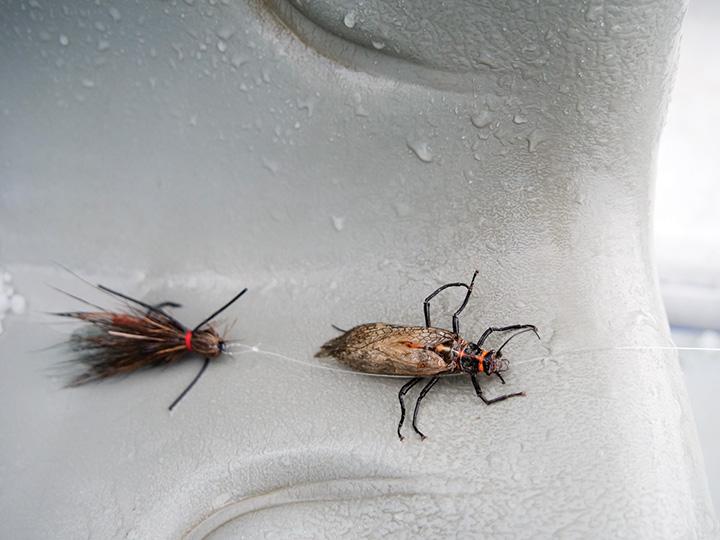A Bug's Life
Matching the Montana hatch.
Walk into any of southwest Montana’s great fly shops and you’ll notice hundreds of patterns, each representing a specific insect at a specific time in its life cycle. Where to start? Here are five insect types you’re likely to encounter in the rivers around Bozeman, and the patterns you’ll need to represent them.
Stoneflies
Stoneflies are prolific in all western streams and these bigger bites are easy to recognize: three sets of legs, split tails and antenna, swept-back wings, and prehistoric-looking in both the nymph and dry stage. The most famous of this family is the salmonfly, a large orange stonefly that hatches in June and early July. Stoneflies’ multi-year lifespan make them available as a food source year-round, and the fish know it.
Pat’s Rubber Legs easily represents sub-surface nymph stages. Make sure to have these in a variety of colors and sizes. Trout like the larger and darker ones in the spring and smaller, lighter ones as the summer wears on. For a dry-fly imitation, I love the Chubby Chernobyl in a variety of sizes and colors, but the size 10 with a golden-orange body and tan legs is the go-to year-round.
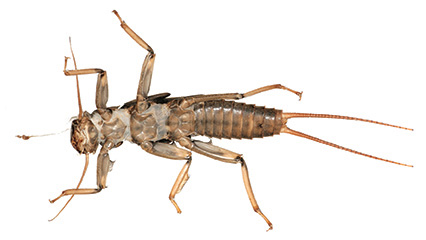 | 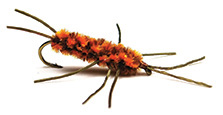 |
Caddis
Caddisflies hatch from May until August, and on many rivers, they are a significant food source. You can easily spot them by the dancing of the adults above the water on a warm summer evening. This is a mating swarm and shortly afterward the females drop to the water to lay eggs. The adults have swept-back wings that form a tent-like structure and can have bodies that are tan, olive, or orange. One of the most famous caddis hatches is the Mother’s Day Caddis Hatch at the beginning of May.
To represent adults, try an elk-hair caddis, or a Furminksi fluttering caddis. For the summer caddis, I like tan bodies. For the Mother’s Day hatch, I like the Rio Grande caddis with the peacock body. These May-hatching caddis have a darker body and the peacock does a great job.
Caddis in the nymph stage are the rivers’ handyman. Many caddis species build nests of small pebbles holding them together with spider web–like netting. The nymph form is most vulnerable to fish during emergence. They shoot to the surface with an air bubble attached. Webby soft-hackle nymphs with CDC (a type of feather) trap the air bubble and look like an emerging caddis. I like the CDC prince nymph, Delektable CDC Baby, and the TungDart to represent the emerging caddis.
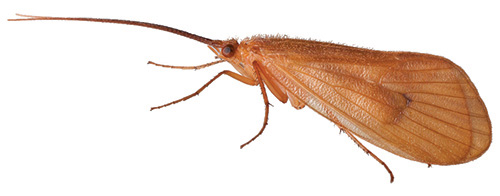 | 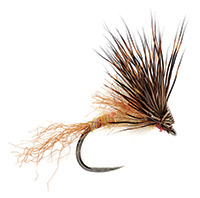 |
Mayflies
Mayflies are easily recognizable by their upright wings that resemble a sailboat when the fly is floating on the surface. Legendary hatches such as the pale morning dun and the blue-winged olive are both mayflies.
There are a few things to keep in mind with mayfly adults. They do not shoot to the surface like caddis. They float up and the adult must free itself from the nymph shuck and emerge from the surface film. This makes them really vulnerable at that stage. For the true adult, flies like the parachute Adams, Compara dun, and the super-effective Purple Haze are great options. If you put a few good casts over a rising fish with no takes, it is probably eating emergers stuck in the film. When this happens, try a Quigley cripple, or an RS2.
Mayfly nymphs are narrow-bodied and slim compared to other nymphs. I like pheasant tails, Psycho May, and Military May. Mayfly nymphs are clumsy and are easily knocked off rocks, making them easy fare for fish.
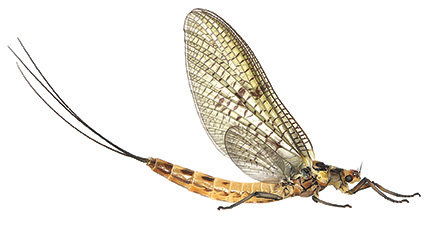 | 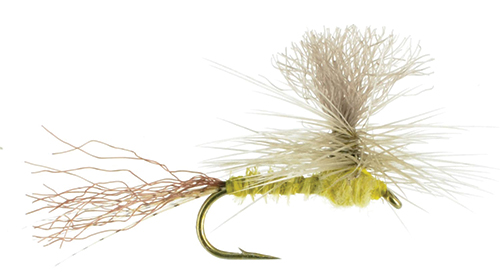 |
Midges
Midges are probably the most overlooked of all aquatic insects, but they are a food source of fish year-round. The adults have short wings and are bad fliers. When midges hatch, the adults form clusters on the surface of several adult midges. These are easily recognizable and can be imitated by the Buzz Ball, para-midge, or Griffith’s gnat.
Subsurface midges are larval worms; flies like the simple zebra midge and blood midge are really good representations. While midges hatch year-round, they are a major food source during the early spring and late fall.
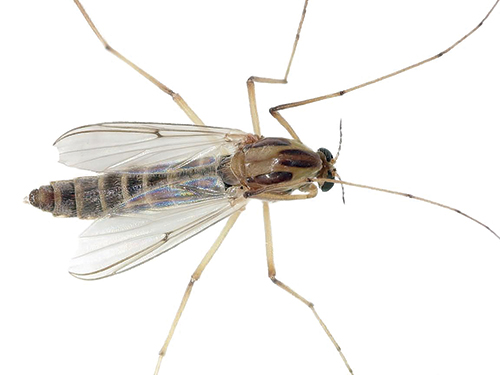 | 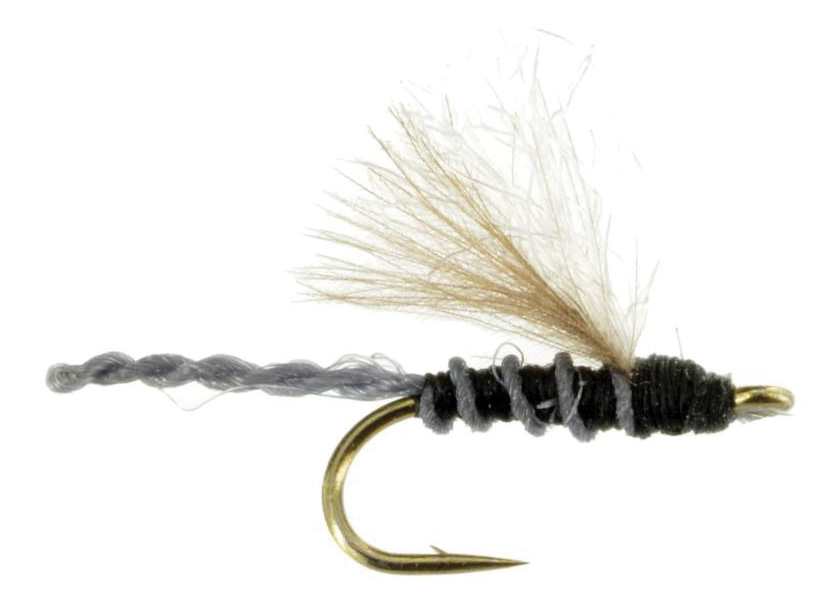 |
Terrestrials
When most people think traditional trout food, they think of waterborne insects. Actually, some terrestrials make up a stable source of a trout’s diet for a good portion of the summer. The hopper is the most common terrestrial, but not the most important. Ants are available in good numbers for most of the season. Flies like the Gallops Ant Acid, Delektable CDC ant, and power ant will be taken by fish all summer.
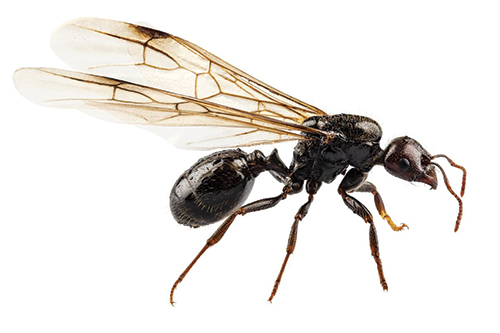 | 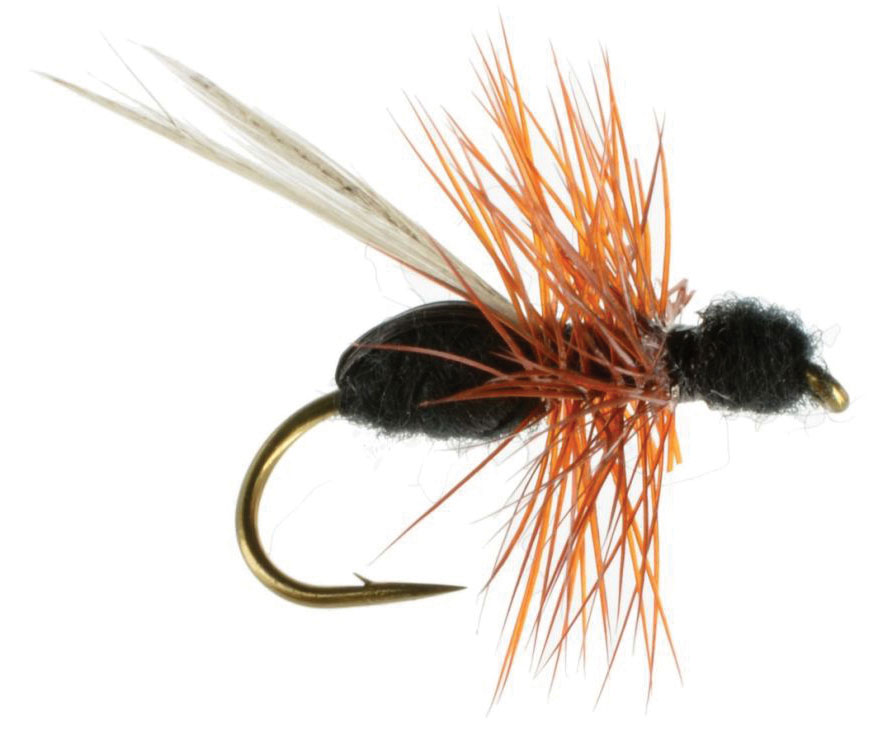 |
John Way owns the Tackle Shop in Ennis.

